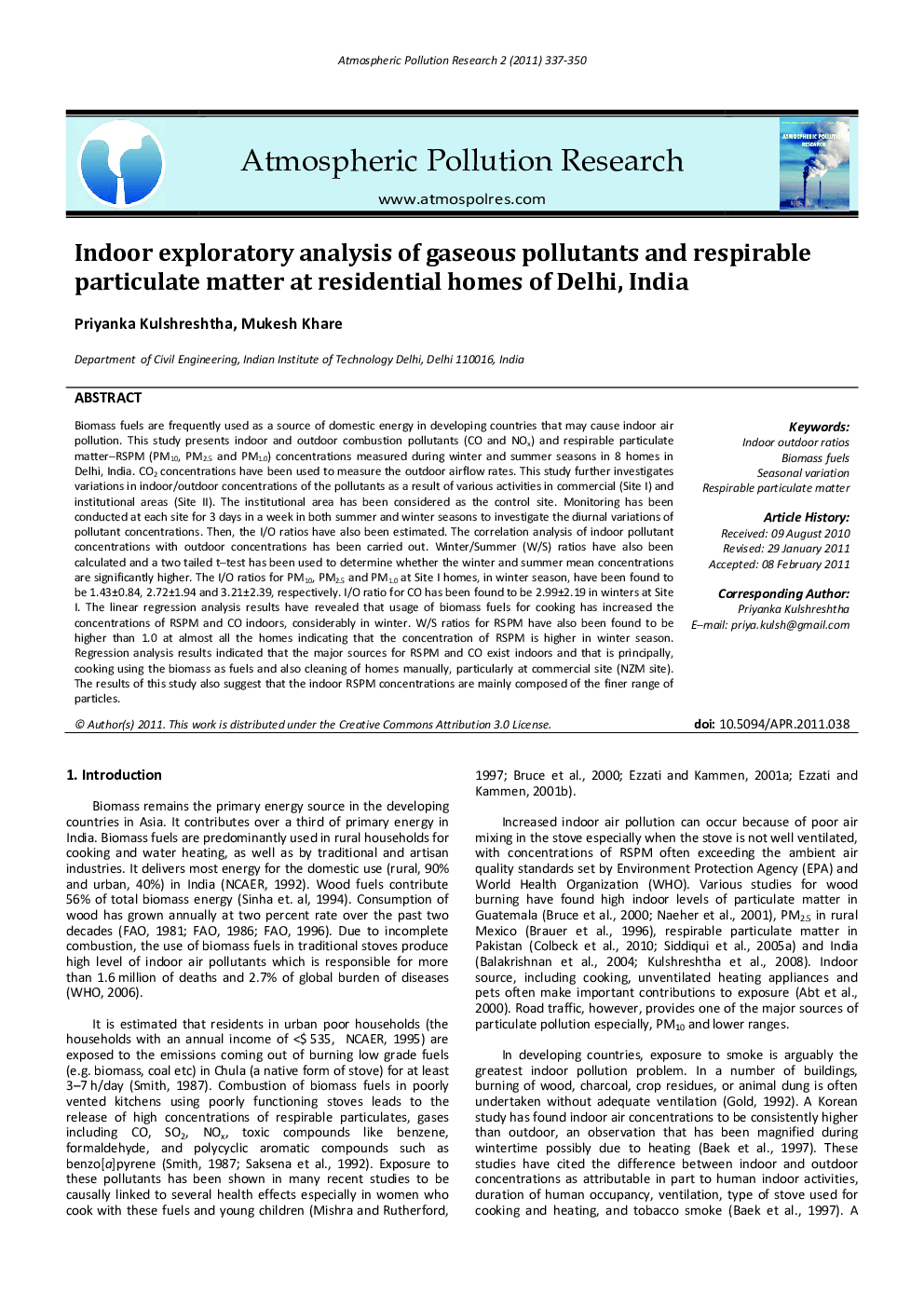| کد مقاله | کد نشریه | سال انتشار | مقاله انگلیسی | نسخه تمام متن |
|---|---|---|---|---|
| 4434931 | 1310534 | 2011 | 14 صفحه PDF | دانلود رایگان |

Biomass fuels are frequently used as a source of domestic energy in developing countries that may cause indoor air pollution. This study presents indoor and outdoor combustion pollutants (CO and NOx) and respirable particulate matter–RSPM (PM10, PM2.5 and PM1.0) concentrations measured during winter and summer seasons in 8 homes in Delhi, India. CO2 concentrations have been used to measure the outdoor airflow rates. This study further investigates variations in indoor/outdoor concentrations of the pollutants as a result of various activities in commercial (Site I) and institutional areas (Site II). The institutional area has been considered as the control site. Monitoring has been conducted at each site for 3 days in a week in both summer and winter seasons to investigate the diurnal variations of pollutant concentrations. Then, the I/O ratios have also been estimated. The correlation analysis of indoor pollutant concentrations with outdoor concentrations has been carried out. Winter/Summer (W/S) ratios have also been calculated and a two tailed t–test has been used to determine whether the winter and summer mean concentrations are significantly higher. The I/O ratios for PM10, PM2.5 and PM1.0 at Site I homes, in winter season, have been found to be 1.43±0.84, 2.72±1.94 and 3.21±2.39, respectively. I/O ratio for CO has been found to be 2.99±2.19 in winters at Site I. The linear regression analysis results have revealed that usage of biomass fuels for cooking has increased the concentrations of RSPM and CO indoors, considerably in winter. W/S ratios for RSPM have also been found to be higher than 1.0 at almost all the homes indicating that the concentration of RSPM is higher in winter season. Regression analysis results indicated that the major sources for RSPM and CO exist indoors and that is principally, cooking using the biomass as fuels and also cleaning of homes manually, particularly at commercial site (NZM site). The results of this study also suggest that the indoor RSPM concentrations are mainly composed of the finer range of particles.
Journal: Atmospheric Pollution Research - Volume 2, Issue 3, July 2011, Pages 337–350